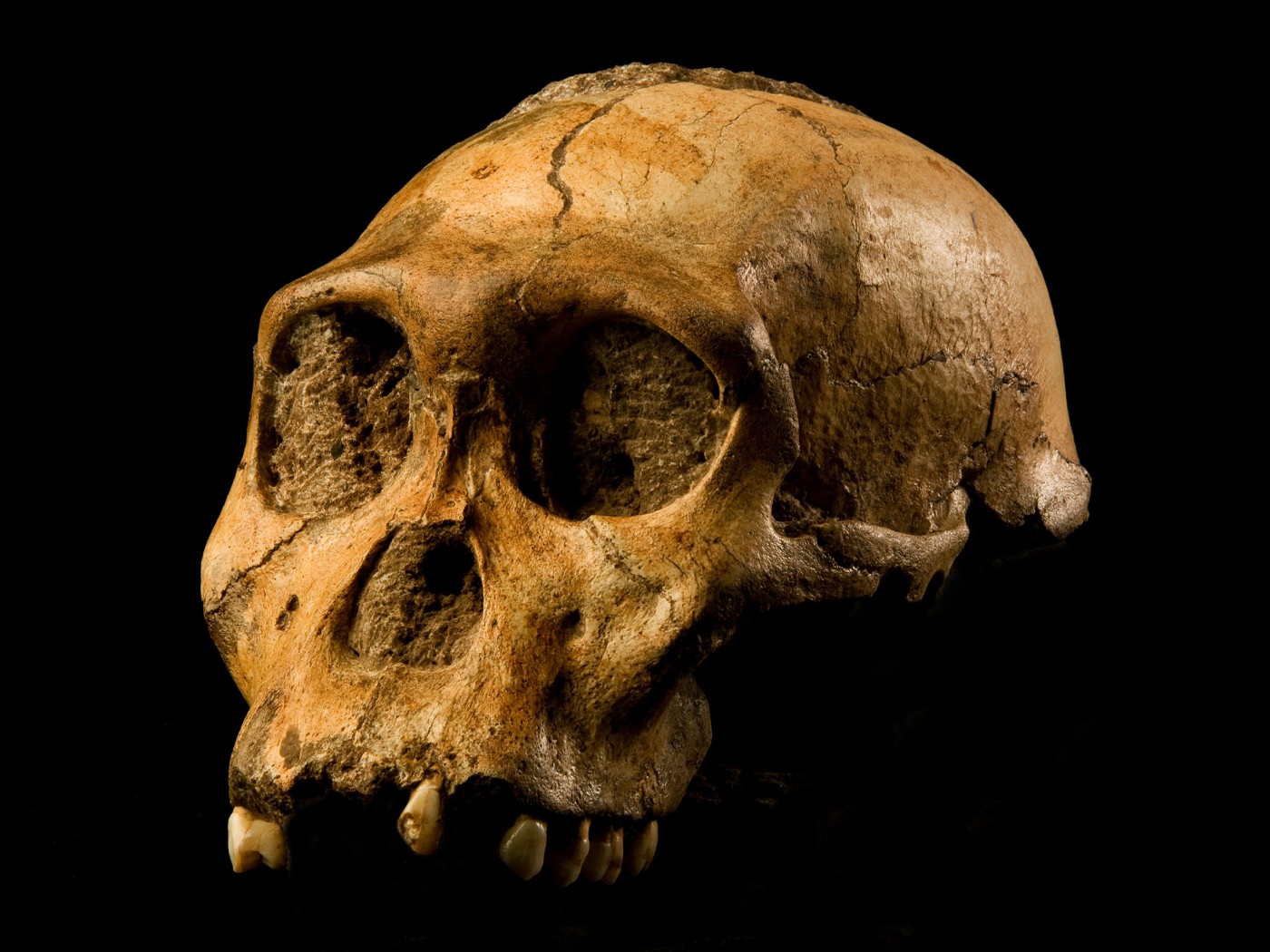ICR began publishing its popular free newsletter Acts & Facts in June 1972, over 31 years ago. The first two issues were 6-page, single-column, fold-over tract-like papers, black-and-white—not very impressive in appearance.
Issue No. 1 contained only news items describing some of our early campus meetings. Specially featured was the meeting held by Dr. Duane Gish on the Davis campus of the University of California. This was the meeting that involved an unscheduled 2½ hour debate with world-famous evolutionist, G. Ledyard Stebbins. A favorable response from the large student attendance and a very positive write-up in the student paper eventually led to Dr. Gish's famous cartoon booklet, Have You Been Brainwashed? which has been greatly used by the Lord in the past three decades, being distributed in the millions all over the world.
That issue also announced the publication of Dr. Gish's first book, Evolution: The Fossils Say No! which has been used widely and has won many evolutionists to accept the truth of special creation.
Issue No. 2 also was mostly news, but it did contain a semi-technical article on "The Mathematical Impossibility of Evolution" which is being reproduced herein as a matter of interest—not only of historical interest as the forerunner of our popular Impact articles (the first of which was published in the first 1973 issue), but also because it still seems to show in a very simple way that evolution is impossible—no one, to my knowledge, has ever tried to refute it.
The third issue of Acts & Facts reported on the first ICR-sponsored expedition to Mount Ararat in search of Noah's Ark, led by John Morris. The first Impact article, however, was published in the January/February 1973 issue on the subject, "Evolution, Creation, and the Public Schools," urging that concerned citizens should use an educational and persuasion approach, rather than legislation or litigation, in trying to get a balanced approach to origins teaching accepted in the public schools.
In spite of this advice, however, many well-meaning creationists have tried—always unsuccessfully—to try to force this issue. We still recommend education and persuasion as the best policy.
Anyway, an Impact article on significant scientific or apologetics topics has been published every month since that first 1973 Acts & Facts. The forerunner of all these, still quite valid, I believe, is reproduced with a few modifications below:
The Mathematical Impossibility of Evolution
According to the most-widely accepted theory of evolution today, the sole mechanism for producing evolution is that of random mutation combined with natural selection. Mutations are random changes in genetic systems. Natural selection is considered by evolutionists to be a sort of sieve, which retains the "good" mutations and allows the others to pass away.
Since random changes in ordered systems almost always will decrease the amount of order in those systems, nearly all mutations are harmful to the organisms which experience them. Nevertheless, the evolutionist insists that each complex organism in the world today has arisen by a long string of gradually accumulated good mutations preserved by natural selection. No one has ever actually observed a genuine mutation occurring in the natural environment which was beneficial (that is, adding useful genetic information to an existing genetic code), and therefore, retained by the selection process. For some reason, however, the idea has a certain persuasive quality about it and seems eminently reasonable to many people—until it is examined quantitatively, that is!
For example, consider a very simple putative organism composed of only 200 integrated and functioning parts, and the problem of deriving that organism by this type of process. The system presumably must have started with only one part and then gradually built itself up over many generations into its 200-part organization. The developing organism, at each successive stage, must itself be integrated and functioning in its environment in order to survive until the next stage. Each successive stage, of course, becomes statistically less likely than the preceding one, since it is far easier for a complex system to break down than to build itself up. A four-component integrated system can more easily "mutate" (that is, somehow suddenly change) into a three-component system (or even a four-component non-functioning system) than into a five-component integrated system. If, at any step in the chain, the system mutates "downward," then it is either destroyed altogether or else moves backward, in an evolutionary sense.
Therefore, the successful production of a 200-component functioning organism requires, at least, 200 successive, successful such "mutations," each of which is highly unlikely. Even evolutionists recognize that true mutations are very rare, and beneficial mutations are extremely rare—not more than one out of a thousand mutations are beneficial, at the very most.
But let us give the evolutionist the benefit of every consideration. Assume that, at each mutational step, there is equally as much chance for it to be good as bad. Thus, the probability for the success of each mutation is assumed to be one out of two, or one-half. Elementary statistical theory shows that the probability of 200 successive mutations being successful is then (½)200, or one chance out of 1060. The number 1060, if written out, would be "one" followed by sixty "zeros." In other words, the chance that a 200-component organism could be formed by mutation and natural selection is less than one chance out of a trillion, trillion, trillion, trillion, trillion! Lest anyone think that a 200-part system is unreasonably complex, it should be noted that even a one-celled plant or animal may have millions of molecular "parts."
The evolutionist might react by saying that even though any one such mutating organism might not be successful, surely some around the world would be, especially in the 10 billion years (or 1018 seconds) of assumed earth history. Therefore, let us imagine that every one of the earth's 1014 square feet of surface harbors a billion (i.e., 109) mutating systems and that each mutation requires one-half second (actually it would take far more time than this). Each system can thus go through its 200 mutations in 100 seconds and then, if it is unsuccessful, start over for a new try. In 1018 seconds, there can, therefore, be 1018/102, or 1016, trials by each mutating system. Multiplying all these numbers together, there would be a total possible number of attempts to develop a 200-component system equal to 1014 (109) (1016), or 1039 attempts. Since the probability against the success of any one of them is 1060, it is obvious that the probability that just one of these 1039 attempts might be successful is only one out of 1060/1039, or 1021.
All this means that the chance that any kind of a 200-component integrated functioning organism could be developed by mutation and natural selection just once, anywhere in the world, in all the assumed expanse of geologic time, is less than one chance out of a billion trillion. What possible conclusion, therefore, can we derive from such considerations as this except that evolution by mutation and natural selection is mathematically and logically indefensible!
Discussion
There have been many other ways in which creationist writers have used probability arguments to refute evolutionism, especially the idea of random changes preserved, if beneficial, by natural selection. James Coppedge devoted almost an entire book, Evolution: Possible or Impossible (Zondervan, 1973, 276 pp.), to this type of approach. I have also used other probability-type arguments to the same end (see, e.g., Science and Creation, Master Books, pp. 161-201).
The first such book, so far as I know, to use mathematics and probability in refuting evolution was written by a pastor, W. A. Williams, way back in 1928. Entitled, Evolution Disproved, it made a great impression on me when I first read it about 1943, at a time when I myself was still struggling with evolution.
In fact, evolutionists themselves have attacked traditional Darwinism on the same basis (see the Wistar Institute Symposium, Mathematical Challenges to the Neo-Darwinian Interpretation of Evolution, 1967, 140 pp.). While these scientists did not reject evolution itself, they did insist that the Darwinian randomness postulate would never work.
Furthermore, since the law of increasing entropy, or the second law of thermodynamics, is essentially a statement of probabilities, many writers have also used that law itself to show that evolution on any significant scale is essentially impossible. Evolutionists have usually ignored the arguments or else used vacuous arguments against them ("Anything can happen given enough time"; "The earth is an open system, so the second law doesn't apply"; "Order can arise out of chaos through dissipative structures"; etc.).
In the real world of scientific observation, as opposed to metaphysical speculation, however, no more complex system can ever "evolve" out of a less complex system, so the probability of the naturalistic origin of even the simplest imaginary form of life is zero.
The existence of complexity of any kind is evidence of God and creation. "Lift up your eyes on high, and behold who hath created these things, that bringeth out their host by number: He calleth them all by names by the greatness of His might, for that He is strong in power; not one faileth" (Isaiah 40:26).



















